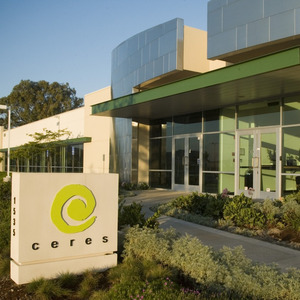Ceres discusses plan to realign its focus during investor call

Ceres Inc.
July 14, 2015
BY Erin Krueger
Ceres Inc. has released financial results for its fiscal third quarter, reporting the company is continuing to realign its focus towards food and forage opportunities and biotechnology traits.
“Our core technology platforms and biotech traits provide multiple opportunities for out-licensing by crop, geography and market,” said Richard Hamilton, president and CEO of Ceres. “Our strategy is to continue to build our proprietary sorghum seed business while we advance our biotech traits and technology toward commercialization. As we demonstrated this quarter, the more advanced these traits and products are in our pipeline, the more valuable they can become.”
Advertisement
Advertisement
During an investor call, Hamilton explained that the company took additional steps last month aimed at focusing more on its strength in agricultural technologies. “We have redirected our pipeline of seed products and traits towards food and feed markets that are being driven by global prosperity, and away from bioenergy markets, which continue to struggle under a number of political and economic headwinds,” he said.
According to Ceres, total plantings of its forage sorghum hybrids are expected to cover more than 3,000 acres in North America during the 2015 growing season, up from 600 acres during the 2014 growing season. Ceres also indicated it has entered into a multi-year collaboration with a leading agricultural producer to develop improved crop varieties with higher yields, accelerated growth and greater resilience to drought conditions. In addition, Ceres reported progress with Persephone, its bioinformatics software, noting it was licensed to a seed potato developer and is being evaluated by new potential customers in plant genomics as well as in biomedical research and diagnostics.
In Brazil, Ceres announced a realignment plan in June consistent with its shift from bioenergy to food and feed opportunities. Current cost reductions implemented under the plan are expected to deliver cash savings of $4 to $5 million in fiscal year 2016. Additional cost reductions are also expected to be made.
Advertisement
Advertisement
During the recently completed 2014-’15 sorghum growing season in Brazil, Ceres reported it achieved continuous progress from its product development pipeline, including the highest ethanol yields achieved to date at industrial scale by one of its sweet sorghum products. A number of its pre-commercial high biomass sorghum and sweet sorghum hybrids also met or exceeded field performance targets in multiple regions. Ceres said that based on anecdotal reports, its commercial high-biomass sorghum plantings widely outyielded competing products this season at locations where side-by-side comparisons were available. However, yields were below company targets due, in part, to delays during planting and less than optimal harvest practices.
Ceres reported revenues of $1.1 million for the quarter, up $300,000 from the same period of last year. According to the company, revenue from collaborative research and government grants was up $300,000 while product sales were relatively unchanged. Total cost and operating expenses were $7 million, down $1.5 million when compared to the same period of 2014. Cost of product sales increased $300,000, reaching $900,000, when compared to the same period last year. Research and development expenses decreased by $1.1 million, reaching $2.5 million. Selling, general and administrative expenses were down $200,000, reaching $3.6 million. For the quarter, Ceres reported a net loss of $5.9 million, or 98 cents per share, compared to a net loss of $7.7 million, or $1.35 per share, during the same quarter of last year.
Related Stories
The U.S. Department of Energy’s Office of Energy Efficiency and Renewable Energy is soliciting public comments on a preliminary plan for determining provisional emissions rates (PER) for the purposes of the 45Z clean fuel production credit.
On July 17, Iowa’s cost-share Renewable Fuels Infrastructure Program awarded $1.12 million in grants for 20 applicants to add B11 and 4 applicants to add E15 to retail sites. This was the first meeting following the start of RFIP’s fiscal year.
Par Pacific Holdings Inc., Mitsubishi Corp. and ENEOS Corp. on July 21 announced the signing of definitive agreements to establish Hawaii Renewables LLC, a joint venture to produce renewable fuels at Par Pacific’s refinery in Kapolei Hawaii.
A new study published by the ABFA finds that the U.S. EPA’s proposal to cut the RIN by 50% for fuels made from foreign feedstocks, as part of its 2026 and 2027 RVOs, could stall the growth of the biomass-based diesel (BBD) industry.
The U.S Department of Energy Bioenergy Technologies Office, in partnership with the Algae Foundation and NREL, on July 21 announced the grand champion and top four winning teams of the 2023 - 2025 U.S. DOE AlgaePrize Competition.
Upcoming Events










